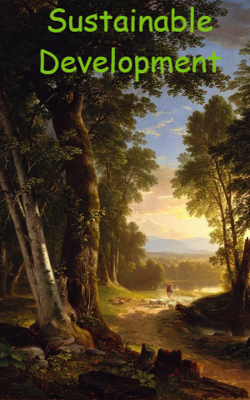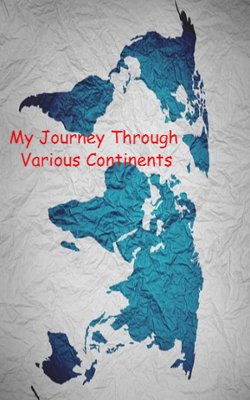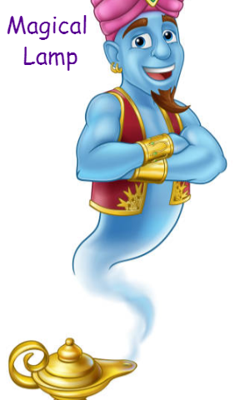My Imaginary Journey To The World Of Planets
My Imaginary Journey To The World Of Planets


Everyone has different dreams in their life; just like others, I also have a dream to visit & travel in the world of Planets. To fulfill my dream, I made a spaceship from engineers and scientists that can survive on the gases of other planets. I started my journey by taking the blessings from my family members. The main motto of my journey is to find the possibility of human life on other planets.
First of all, I visited Space Station. At that moment, I felt that this station should be on every planet so that I can take a halt & repair my spaceship there. Also, there should be fuel stations on every planet for a spaceship, composed of the gases each and every planet have.
After I have completed my journey from space stations, I landed on the first planet of the Solar System, Mercury. It is a hot planet as it is located near the Sun. Mercury is also smaller- albeit more massive- than the largest natural satellites in the Solar System, Ganymede, and Titan. It had no moons. Mercury's atmosphere is composed mostly of oxygen, sodium, hydrogen, helium, and potassium. Mercury has a dark grey, a rocky surface that is covered with a thick layer of dust. My weight on Mercury is 38% of my weight on Earth. As a good conductor of electricity, mercury is often used in many products such as switches and batteries. It is used to amalgamate gold and silver in small-scale mining activities because it readily combines with other metals. Scientists do not believe there has ever been life on Mercury. The atmosphere on Mercury is almost non-existent.
Then I landed on the next planet of the Solar System, Venus. It is the second brightest natural object in the sky after the moon. Venus is hotter than Mercury despite being further away from the Sun. While Venus is not nearly the largest planet in the Solar System, its proximity to Earth makes it the brightest of the planets in the sky. It also had no moons. The atmosphere of Venus is composed of 96.5% carbon dioxide, 3.5%, and traces of other gases, most notably sulfur dioxide. Venus has been called Earth's "evil twin" because it is about the same size as Earth and probably was created out of similar stuff; it might have even had at one time oceans of liquid water. But Venus appears to have suffered a runaway greenhouse effect. Unlike the other planets in our Solar System, Venus spins clockwise on its axis. Although Venus is not the planet closest to the Sun, its dense atmosphere traps heat in a runaway version of the greenhouse effect that warms Earth.
Then I landed on the fourth planet of the Solar System, Mars. Temperatures on Mars average about -81 degrees F. However, temperatures range from around -220 degrees F. in the wintertime at the poles, to +70 degrees F. over the lower latitudes in the summer. The planet Mars has two moons: Phobos and Deimos. Mars' atmosphere, however, is 95% carbon dioxide, 3% nitrogen, 1.6% argon, and traces of oxygen, carbon monoxide, water, methane, and other gases along with a lot of dust. Mars is only about one-half the diameter of Earth, but both planets have roughly the same amount of dry land surface area. Mars is also known as a Red Planet and Earth's closest neighbor yet 35 million miles away. I want to explore each and every inch of the planet. I wear my spacesuit as it was extremely cold and almost impossible to survive in this cold without a spacesuit. So, I have to wear a spacesuit all the time. Mars is the most accessible planet in the Solar System. Exploring Mars may possibly answer the origin and evolution of life questions. Mars could someday be a destination for the survival of humankind. There is the possibility of discovering the new life that could impact life on Earth. Mars is an unforgiving environment where a small mistake or accident can result in large failure, injury, and even death. The greatest dangers include the risk of prolonged cancer and its effects due to exposure to both interplanetary radiation (during Mars transit) and surface radiation (during extended surface stay). Growing a tree on Mars will surely fail with time. The Martian soil lacks nutrients for soil growth and the weather is too cold to grow a tree. The conditions of Mars do not affect Bamboos because the Martian soil serves as a support for them, and it doesn't need enough nutrients for it to grow. The atmosphere on Mars is mostly made of carbon dioxide. It is also 100 times thinner than Earth's atmosphere, so even if it did have a similar composition to the air here, humans would be unable to breathe it to survive. To date, no proof of past or present life has been found on Mars. Cumulative evidence suggests that during the ancient Noachian time period, the surface environment of Mars had liquid water and may have been habitable for microorganisms, but habitable conditions do not necessarily indicate life.
As I was Going to land on the Solar System's biggest planet, Jupiter, I changed the fuel mode of my ship into hydrogen gas, so that it can also run on Jupiter with the help of hydrogen gas present on that planet.
When I landed on Jupiter, I found that it is so big that all the other planets of the Solar System could fit inside it. More than 1,300 Earths would fit inside Jupiter. Jupiter has 53 named moons and another 26 awaiting official names. Combined, scientists now think Jupiter has 79 moons. Jupiter is made up predominantly of hydrogen. The simple, basic gas, a prime ingredient in the sun, accounts for 90% of the atmosphere. Nearly 10% is composed of helium. A very small fraction of the atmosphere is made up of compounds such as ammonia, sulfur, methane, and water vapor. The color of Jupiter is yellow or yellowish-orange. The effects of both these colors are generally positive. This, therefore, is a benefic planet. Its color has a warming effect and energizes the nervous system. Jupiter is called a failed star because it is made of the same elements (hydrogen and helium) as is the Sun, but it is not massive enough to have the internal pressure and temperature necessary to cause hydrogen to fuse to helium, the energy source that powers the Sun and most other Stars. Some astronomers believe that one reason Earth is habitable is that the gravity of Jupiter does help protect us from some comets. Jupiter's gravity is thought to sling most of these fast-moving ice balls out of the Solar System before they can get close to Earth. Multiple significant cycles coexist in the variability of Earth's orbital eccentricity and inclination at any given Jupiter-Sun distance. This is because Jupiter is not the only planet that affects Earth's orbit- the other planets in the Solar System also interact gravitationally with the Earth, as well as with Jupiter. Because there is no solid ground, the surface of Jupiter is defined as the point where the atmospheric pressure is equal to that of Earth. At this point, the pull of gravity is almost two and a half times stronger than it is on our planet. Jupiter's environment is probably not conducive to life as we know it. The Jupiter series consists of shallow and very shallow, poorly and very poorly drained soils that formed in a thin bed of sandy marine sediments overlying limestone bedrock. Jupiter soils are on flat woods, low broad flats, low hammocks, and drainage ways on marine terraces. The temperatures, pressures, and materials that characterize this planet are most likely too extreme and volatile for organisms to adapt to. My information about Jupiter indicates that it is a far from friendly planet to both plant and animal life. Hence, Jupiter has none of the right conditions to support the kind of life we have on Earth.
Then I go towards the planet Saturn. The outer part of Saturn is made of gas and the very top layers have about the same pressure as the air does on Earth. Saturn's rings are made of ice and rock. These pieces vary in size. Some areas are small as a grain of sand, others are as large as a house. I tried to walk on this part of Saturn; I am going to sink through its atmosphere. Saturn's atmosphere is very thick and its pressure is increasing the deeper I am going. Saturn has 82 moons. Saturn's moon range in size from larger than the planet Mercury, the giant moon, Titan; to as small as a sports arena, the smallest moon, Mimas. The moons shape, contribute and also collect material from Saturn's rings and magnetosphere. Saturn is approximately 75% hydrogen and 25% helium with traces of other substances like methane and water ice. Saturn's atmosphere, although similar to Jupiter's, is much less interesting to look at from a distance. Saturn's environment is not conducive to life. While planet Saturn is an unlikely place for living things to take hold, the same is not true of some of its many moons. Satellites like Enceladus and Titan, home to internal oceans, could possibly support life.
When I landed on the planet Uranus, I changed the mode of my ship into semi-gas fuel mode as there is plenty of hydrogen and helium. Uranus was discovered in 1781 by astronomer, William Herschel, although he originally thought it was either a comet or a star. Uranus' atmosphere is mostly hydrogen and helium, with a small amount of methane and traces of water and ammonia. The methane gives Uranus its the signature blue color. Uranus is the coldest planet in the Solar System. It is the second least dense planet. Uranus has rings. Uranus has 27 moons total, but the planet has five especially large moons — Titania, Oberon, Umbriel, Ariel, and Miranda. Similar to the other gas giants I have explored so far, Uranus has no solid surface. Instead, ammonia, methane, and water ices comprise most of Uranus. ... Therefore, living on Uranus will be limited to the outer cloud top layers. Living in the outer cloud layers in a protective bubble-like home will work best.
Then I am going to land on the planet Neptune. It is the coldest planet in the solar system as it is very far from the Sun. Neptune is the eighth and farthest known solar planet from the Sun. In the Solar System, it is the fourth-largest planet by diameter, the third-most-massive planet, and the densest giant planet. It is 17 times the mass of Earth, slightly more massive than its near-twin Uranus. Neptune's atmosphere is made up mostly of hydrogen and helium with just a little bit of methane. Neptune's neighbor Uranus is a blue-green color due to such atmospheric methane, but Neptune is a more vivid, brighter blue, so there must be an unknown component that causes the more intense color. Neptune has 14 known moons. To find life on Neptune, the planet would need to have a source of energy that bacterial life can exploit, as well as a standing source of liquid water. At its surface, the temperature of Neptune dips down to 55 Kelvin. That's very cold, and there's no way liquid water could exist.
I explored each and every planet but the most life-supporting planet is only our Earth. We should keep it clean and green for the forthcoming generations. It is the most precious gift given by God to the entire humanity.
































































